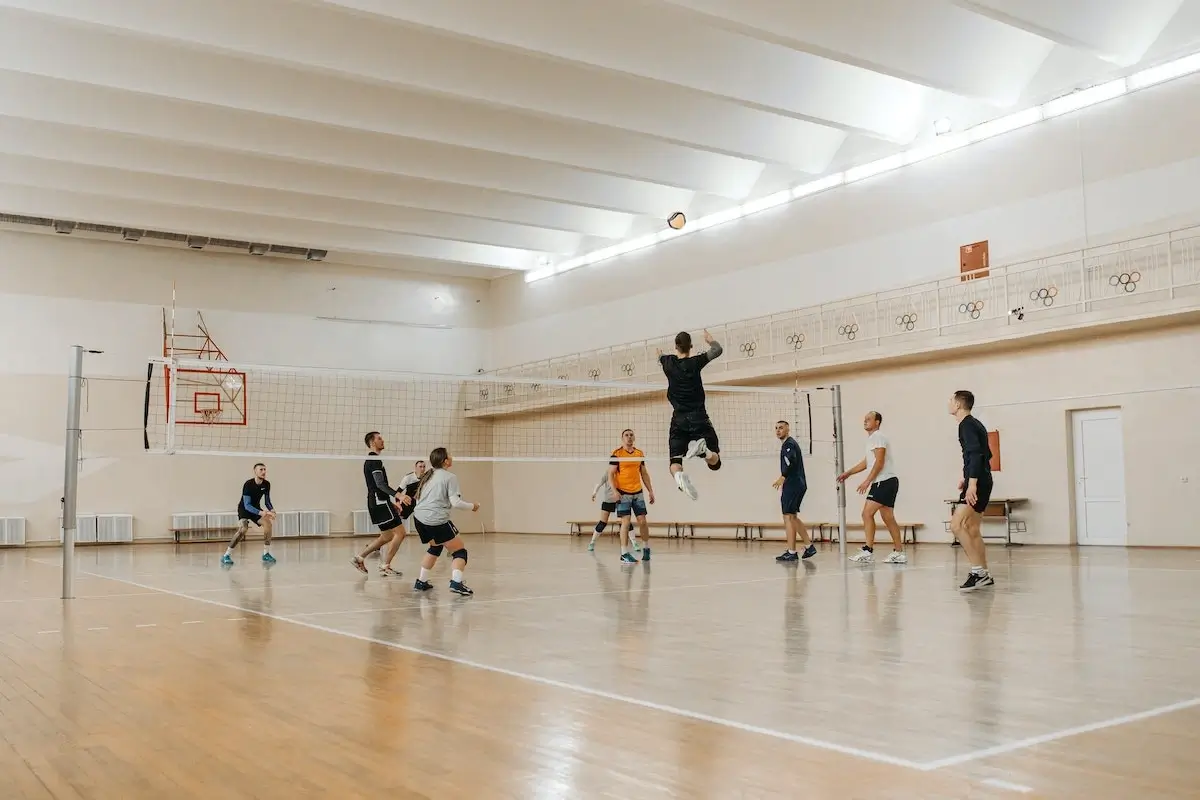Last Updated: February 27, 2024
Enhancing specific volleyball skills according to positions is one thing. However, ultimately, volleyball is a team based game, so you’ll also need to develop some techniques to include the whole team. On this note, developing useful offensive strategies is a completely different thing.
Developing the right strategies is a must if you want your team to succeed. Many of these strategies focus on the entire team, not individual players. You can, indeed, work on becoming more versatile and difficult to anticipate, but that’s another story.

Here are some useful strategies to consider for your team.
Dominant Volleyball Offensive Strategies
1. Confusing Effective Communication
Since volleyball is a team based sport, communication is a must. It should be constant. Make sure players are comfortable with doing it openly. You can all discuss strategies or perhaps determine who takes the ball, things like that.
Apart from ensuring the team is comfortable communicating, you also need to come up with some less obvious signals. Develop a form of communication that everyone’s familiar with, but nothing that’s obvious for the opponent.
As you get used to these signals, you can also take this venture even further. Misdirect the opponent by using random messages that have nothing to do with the actual plans.
Getting there is simple. First, get a coded language with just a few expressions for things that matter. Then, every other random thing your mates say can be ignored. Your opponent will never know.
2. Positional Knowledge
Positioning is very important in volleyball, and each player should know where to be or which way to go in different situations. But this isn’t everything, of course. Most players are aware of their own responsibilities and tasks only.
The secret to being an effective team is in your knowledge. Become familiar with the responsibilities of every other position in your team. Make sure you know where the setter should be or what they do, not to mention the libero, the middle blocker and other positions.
Knowing these things will help you determine your mates’ next moves, so you can plan your strategy in a more effective manner. Knowing where others should be will also help you in communication, so it’s imperative for a successful offensive play.
Observe other things as well, such as your mates’ tendencies in certain situations.
It sounds easy; the more you know about your team, the better the game will be, yet most players won’t bother to learn more about other positions, too.
3. Transition is a Must
Transition is important in volleyball, yet lots of players do it based on their instinct. This isn’t really a strategy. Besides, many times, instinct could be wrong, so you need to work against it based on what’s better for the team.
Transition affects offense and defense. Once your team has made a successful block or dig, you’ll need to transition to an offensive position straight away. The ball is yours, so you must get ready to attack regardless of your position.
The same rule applies after an attack, too. Once you send the ball over, make sure you adopt a defensive position straight away, only to prevent a counter attack. Don’t use your instinct, but stick to what you’ve learned in training based on your team’s strategy.
4. Adjustability Based on Weaknesses
Paying attention to others’ strengths that’s what most volleyball players do. They try to identify their opponents’ strengths so they can defend accordingly. That’s not unusual at all; everyone does it in most team-based sports.
What most players don’t do is focus on opponents’ weaknesses. Indeed, proper observation will help you identify some tendencies, patterns, and styles, but that’s not everything. Their weaknesses will give you the opportunity to organize an attack in a more effective manner.
For some reason, everyone’s looking at the defensive aspect of observation, and no one really pays attention to the offensive side. Such information will help you adapt your strategy by exploiting various gaps in the opponent team’s defense.
5. Serving is About Full Control
Also related to the previous strategy, serving is also overlooked, yet it’s extremely important. It’s not all about sending the ball to your opponent’s side of the court. Instead, that’s the only time in the game when you’re 100% in control of the ball.
Serving gives you more control than an easy dig or a pass, so use this advantage. You’ll have to get the opponents to guess, so there are certain things you can change with regular training. The speed is one of them, you don’t necessarily need to be the fastest.
The direction is just as important. Based on your observations, pay attention to weak receivers and gaps in the opponent defense.
6. Diversity Makes Attacks Efficient
Many teams go on their strengths. They use whatever type of attack feels more powerful. They focus and train on it in order to excel at this style. No matter how good they are, the fact that it is predictable makes it defendable at some point.
Opponent defenders will adjust to block these attacks. But when every attack is different, chances are your team will score more.
From hard hits and off-speed shots to rolls and tips, the attack style should be changed every two attacks. Ideally, you should change each attack, but pretending to attack one way and changing it afterwards can also be productive.
7. The Rotation Strategy
The rotation strategy is more difficult to implement at an amateur level, but more effective at a higher level, when players are more experienced.
You’ll realize more teams try to apply it, but many of them will also fail miserably due to poor training.
Each player must be aware of this rotation order and responsibilities associated with each position they come in. This means a player should know when to serve, when to set, when to attack and so on.
Using rotation is a temporary move. The general idea is to match your best attackers against the weakest opponent defenders. On the same note, the team will also be able to identify the best setter for the attacks.
The strategy works just as well in defense, especially when matching blockers against problematic attackers.
8. Using Substitutions with a Strategy in Mind
Players usually get substituted when they feel tired. Fresh blood, new energy, it sounds like the perfect scenario. However, substitutions can also be used as a strategy for attack.
To make these substitutions more effective, use them for particular rotations only. Simply put, this strategy works best with the rotation strategy. Your team might need a stronger server, for example, or perhaps a blocker.
Based on your observations throughout the game, you can also use substitutions to counter attack the opponents by disrupting their rhythm.
9. Boosting Accuracy in Setters
Each setter has their own style when attacking. As you may already know, footwork is extremely important in volleyball, and the setter’s position makes no exception.
This simple strategy applies when setters move from the target to where the pass is supposed to go. Simply put, take a big right step where the pass will go, then pivot on the right foot. Turn and square up where you are about to set the ball.
10. Speed Up the Last Steps
Many attackers use fast small steps. To be more effective, speed up the last couple of steps only. This way, you’ll have more flexibility in the shortening cycle. Your muscles will feel better and give you a better jump and speed.
Final Thoughts
There are lots of strategies out there. Some of them make sense, others are a bit unusual. While anyone can implement them, the truth is many teams overlook these ideas. In the long run, this attitude will lead to numerous small mistakes that can actually cause a team to lose a game without understanding how.
